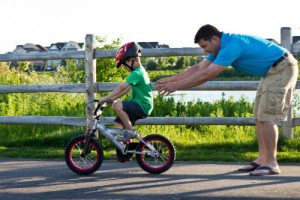Human effort is ubiquitous. From the time we rise in the morning until we retire at night, we engage in diverse endeavors – all of which require effort and skilled bodily motion.
Fortunately, many of these skilled motions have become habitual and require little conscious thought or reflection. Indeed, there are only a few occasions when we have to think about how we move. If a situation makes us self-conscious, we may become painfully aware of bodily movements. If injured, we may have to adjust the way we do things. And when we are learning a new skill, we have to pay close attention to how the activity is done.

The transition from the halting performance of the beginner to the smooth execution of the expert has much to do with mastering the appropriate effort phrasing and repeating the sequence of actions a sufficient number of times. This allows the neuromuscular pattern to be initiated and run “automatically,” without undue conscious intervention.
As a consequence, much of our movement behavior is unreflective. And this is very efficient – until we want or need to change our physical manner of being in the world.
Change requires a special kind of effort, which Rudolf Laban referred to as “humane effort.” In the next blog, I discuss this intriguing concept.
